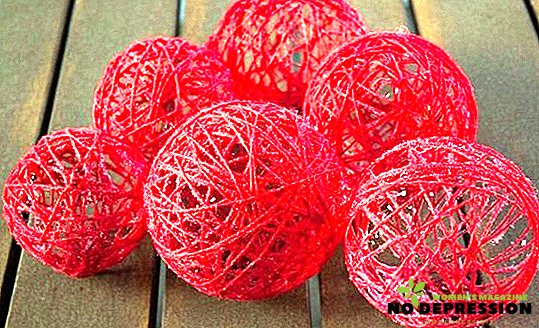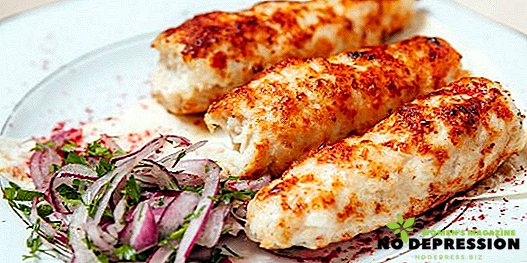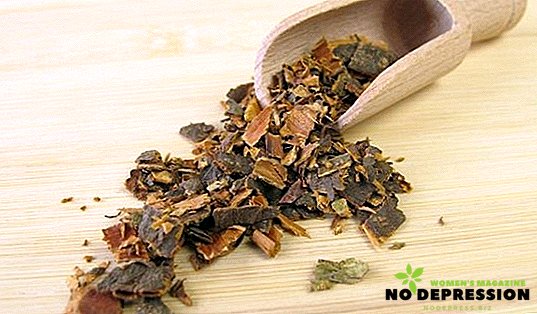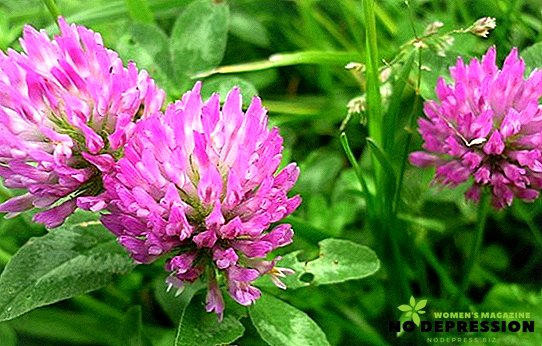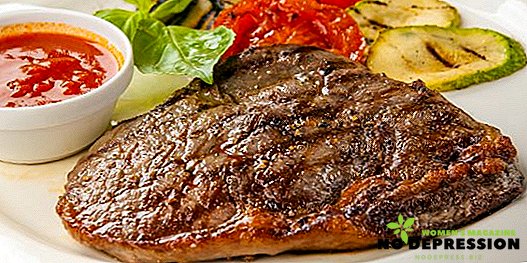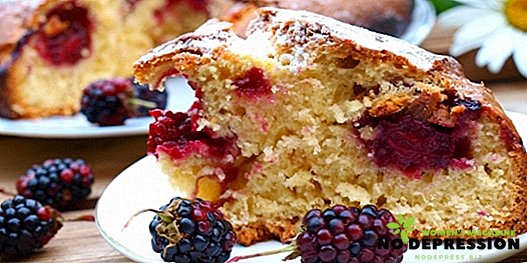Palma yucca has long migrated from the hot climatic zones of America and temperate Europe to apartments and private houses. However, room conditions must comply with the rules.
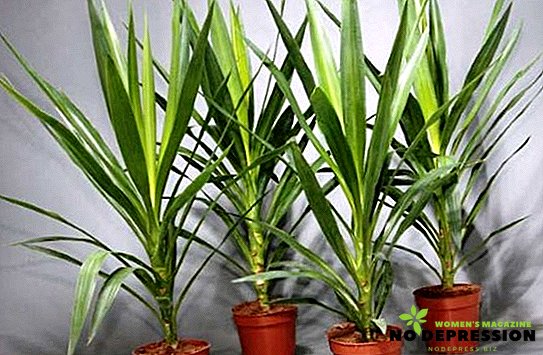
What is a yucca house palm
It is constantly green, with non-falling, rigid xiphoidal leaves, a tree (i.e. having a rather resilient woody stem), a bush of the Asparagaceae family (Asparagaceae), which the Indians called the "tree of life" or "tree of happiness".
The decorative appearance of the plant resembles a small, false palm: its sharp-pointed, similar to a long narrow knife (lanceto-like) sawtooth leaves are localized at the end of the stem, or several branches.
Yucca flowers are numerous, very fragrant, resembling large white or soft cream bells (up to 7 centimeters in length), hanging on short pedicels, form the so-called "panicle" (up to 2.5 meters in diameter!).

At the end of the growing season, a fruit appears on the site of the flower, a fleshy, juicy berry, or a box.
You can enjoy the excellent aroma of the "tree of life" only at night - this is the only time of day when they bloom.
Unfortunately, at room content the plant rarely blooms and never bears fruit, because it is pollinated only by means of special tropical butterflies Pronuba yuccasella.
Varieties
Yucca (Yússa) has a rather large number of its species. According to some encyclopedic data, for example, The Plant List, experts have 50 different taxonomic groups in the Yucca genus, growing in areas of Central and South America, as well as Mexico.
The genus itself is classified into three non-uniform sections:
- Yucca;
- Clistocarpa;
- Chaenocarpa.
Here is a list of species of this shrub, depending on its belonging to a particular section (subspecies):
| Yucca | Clistocarpa | Chaenocarpa |
|---|---|---|
| Yucca aloelista | Jukka, or Joshua Tree | Yucca high |
| Yucca berry (berry) | Yucca beak-shaped | Yucca Arkansas |
| Yucca nitrile | Yucca Wipla
| Yucca bailey |
| Yucca nice | Yucca filamentous | |
| Yucca is gigantic, she is ivory, she is Guatemalan | Yucca Sizaya | |
| Schideger | ||
| Yucca trekulyanskaya (Trekulya) |
Of all the species of yucca, the most common species grown at home are:
- Yucca aloelista (Yucca aloifolia), which gardeners love for the lack of side shoots and lush flowering;
- whip (Yucca whipplei), in the form of a bush with a short stem;
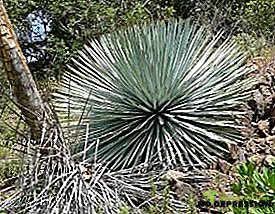
- beak-shaped Yucca (Yucca rostrata), growing of impressive size, with long, thin leaves and beautiful flowers;
- short-leaved Yucca (Yucca brevifolia), with strongly branched, densely planted short leaves;
- Yucca elephant (Yucca elephantipes), most often found at home, because it is unpretentious in the care and pleases the owners with their medicinal properties (helps with arthritis, inflammatory processes, atherosclerosis as a local remedy in the form of extracts and decoction);
- Trekulya (Yucca treculeana), with a lush crown of bluish-green color, with cream bells.
A large variety of "tree of happiness" will allow each gardener to choose a plant to his liking, and to decorate their window sill, or to organize a small greenhouse of several types, and it will surely bring well-being and peace to the house.
Optimal conditions for the content of the yucca palm
This versatile plant is easily grown, in the absence of a mild and warm winter, under ambient conditions, since its tropical origin has given Yukka its heat-loving character.
Therefore, like all such representatives of the flora come from hot countries, it requires:
- additional lighting simulating the sun;
- regular abundant watering, similar to the usual wild plant tropical rainfall in the summer, and moderate - in the winter dormancy.
Location
Best of all, a palm tree itself (growing in a pot of up to 4 meters!) Will feel on windows with a southern, sunny location.
Lighting
The most preferred lighting for the flower will be natural, sunny. But his plant needs at least 12 hours a day!
Therefore, in periods with a short daylight, artificial lights are created, which correspond in spectrum to natural sunlight.

Temperature
In winter, the plant requires a low temperature, a maximum of 12-14º C: i.e. additional heating elements, except for the heating battery under the window sill, are not required!
In the summer months, the plant is recommended direct hot rays (but not young plants!) And a temperature of 20-24 degrees.
Comprehensive care for yucca at home
Comprehensive home care for a mini-palm tree is based on its three guises:
- watering;
- soil fertilizer and plant nutrition;
- pruning.
Watering
 Yucca loves moisture, but at the same time, fearing to "dry out" a palm tree, it is important not to fall into another extreme, not to overdo it with water. The soil in this case can become similar to a swamp swamp, and the palm tree will die from the decay of its root system.
Yucca loves moisture, but at the same time, fearing to "dry out" a palm tree, it is important not to fall into another extreme, not to overdo it with water. The soil in this case can become similar to a swamp swamp, and the palm tree will die from the decay of its root system.
How to understand that a yucca is thirsty? It is necessary to focus on the state of its leaves: if they begin to lose their direct shape and elasticity, they curl around the edges, then yes, water is required, and as quickly as possible.
The optimal frequency of quenching the thirst of a plant is once every two weeks.
“Foggy” spraying of the stem and leaves is very pleasant to the plant: fine hairs are placed along the edges of its leaves, catching the droplets of water from the air.
Fertilizers and dressing
Feed up specially designed flower fertilizers at least once a month.
Pruning
Removed old, dried leaves. If the plant is branching out, extra branches are removed. Sections are treated with garden barb.
Wintering room yucca
In the open ground yucca withstands mild winters in the South of Europe.
Yucca flower transplant
Many amateur growers miss an important point in the proper care of this flower: at least every two years the plant needs transshipment, i.e. transplanting into a larger pot with simultaneous refreshment of its soil and feeding.
If the plant has just been brought from the store, it cannot be disturbed for at least three days: you just need to put the pot on the sunny window sill and water it moderately.

It is clear that the purchased plant will still have to be transplanted: a purchased plastic pot is unlikely to last for a long time, and it does not look very good.
But which pot will do? Considering the peculiarities of this plant, - an impressive, magnificent crown, - the container in which it can be placed, should be not only spacious, but also stable. Otherwise, the crown will outweigh, and the pot will tip over.
Attention! The pot should not be too large either: when choosing it, pay attention to the development of the root system, it should fit freely on the bottom.
Therefore, experienced growers recommended massive pottery pots made from natural materials: clay, ceramics, heavy wood (such as oak).
Transplanting process
Once the plant is rested, you can begin to move it.
The first step is to prepare the tank:
- Scald the pot with boiling clean water;
- or treated with a disinfectant solution (suitable solution furatsilina, for example).
 The next stage - a drainage layer is poured on the bottom of the new pot. This is about 2-4 centimeters of broken shards, or brick crumbs, also pre-scalded.
The next stage - a drainage layer is poured on the bottom of the new pot. This is about 2-4 centimeters of broken shards, or brick crumbs, also pre-scalded.
The shards are a little sprinkled with the following soil composition with a slightly acid or neutral reaction (pH 5-7):
- 2 volumes of clay-sod land;
- 2 volumes of good humus;
- 1 volume of peat;
- 1 volume of scalded river fine sand.
Next, the plant is very carefully removed from its old "place of residence": if the young yucca is transplanted, then the plant will easily "pop out" of plastic packaging, just enough to put it down a little on its sides.
 The root of the released plant is slightly shaken off the soil, and the plant is inspected: the rotten parts of the root system are carefully removed, and the mechanically damaged ones are powdered with crushed coal.
The root of the released plant is slightly shaken off the soil, and the plant is inspected: the rotten parts of the root system are carefully removed, and the mechanically damaged ones are powdered with crushed coal.
Next, it is put in a new pot, and fall asleep almost to the top of the soil mixture.
Attention! The plant after transplantation is experiencing stress, and its functions will be slightly depressed. Therefore, it is not necessary to water the first time very much - just wet the soil with water with a biostimulator diluted in it (for example, Epin), and put "rest" in a quiet (i.e. without drafts and noise), bright place.
Home reproduction
In its natural environment, yucca breeds in several ways:
- seeds;
- basal suckers;
- cuttings.
In greenhouse conditions of seed cultivation is problematic because of their absence: after all, it is not able to pollinate.
However, the "Tree of Happiness" is quite possible to grow from high-quality purchased seeds, but this is not an early occupation: it will take at least two years until a good, viable yucca seedling appears.

The process, in spite of the duration, is not complicated: the seeds are sown at the beginning of spring, they wait for shoots and take care of them until they are strong enough to replant.
The most tried-and-true method of obtaining several plants from one plant is cuttings: in the summer season, a 20-centimeter fragment of the trunk is separated, and a section is cut on the donor plant with a garden pitch.
Stalks are planted in sandy peat soil, moistened and covered with a colorless film.
Diseases and pests
Most often, due to improper care (mainly waterlogging), the plant suffers from diseases such as:
- base rot;
- fungal infections of the trunk and roots.
In this case, it is necessary to treat the roots of the plant with a weak solution of potassium permanganate, transplant into fresh, new soil, and disinfect the pot.
Of the pests most Yucca annoying aphid and shieldovka. From parasites get rid of systemic insecticides.
With the constant observance of the rules of care for this rather unpretentious and hardy standard tree, it can please its owner for more than a dozen years.
A few more tips on caring for yucca at home are in the next video.



